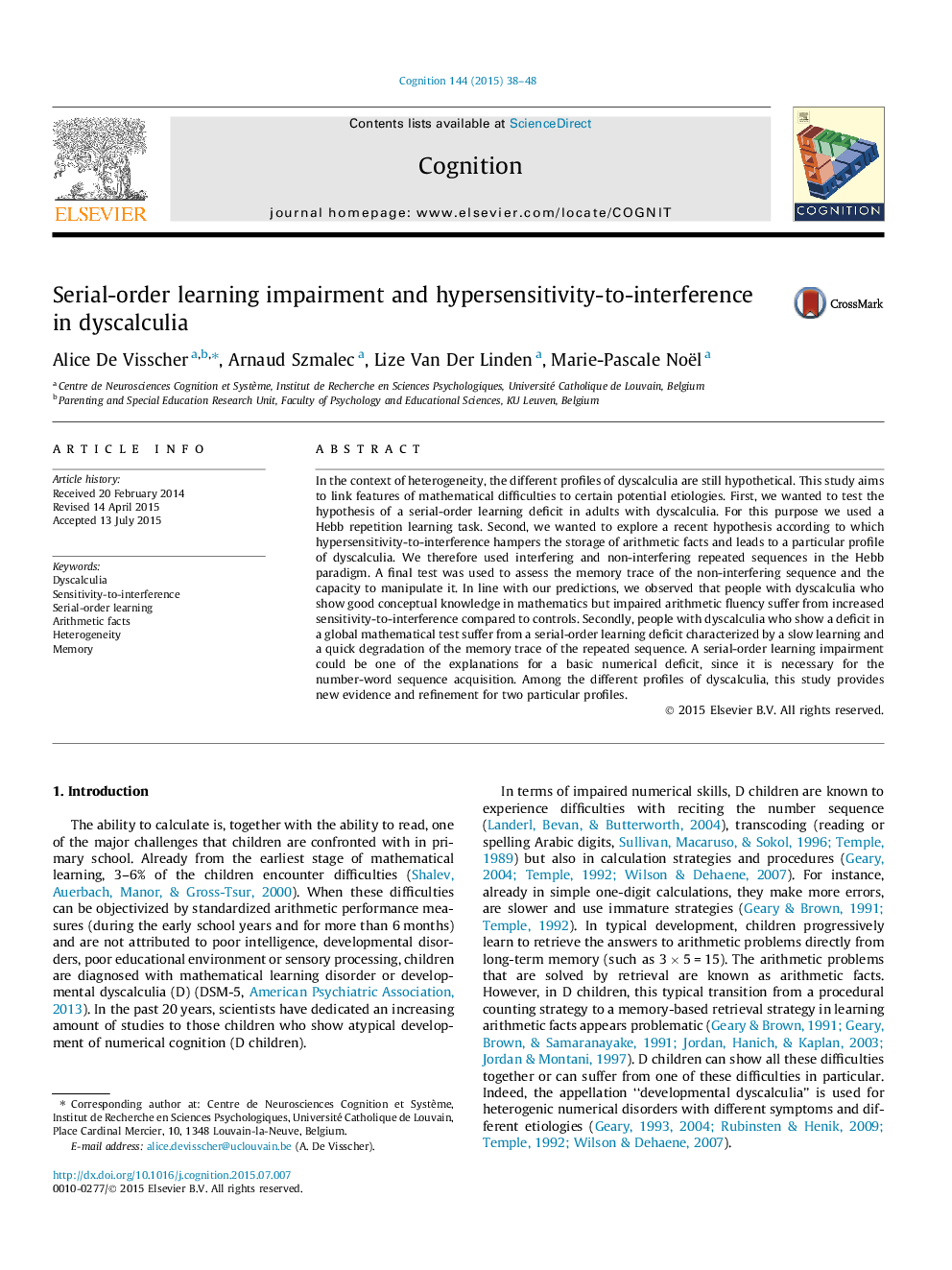| Article ID | Journal | Published Year | Pages | File Type |
|---|---|---|---|---|
| 7286597 | Cognition | 2015 | 11 Pages |
Abstract
In the context of heterogeneity, the different profiles of dyscalculia are still hypothetical. This study aims to link features of mathematical difficulties to certain potential etiologies. First, we wanted to test the hypothesis of a serial-order learning deficit in adults with dyscalculia. For this purpose we used a Hebb repetition learning task. Second, we wanted to explore a recent hypothesis according to which hypersensitivity-to-interference hampers the storage of arithmetic facts and leads to a particular profile of dyscalculia. We therefore used interfering and non-interfering repeated sequences in the Hebb paradigm. A final test was used to assess the memory trace of the non-interfering sequence and the capacity to manipulate it. In line with our predictions, we observed that people with dyscalculia who show good conceptual knowledge in mathematics but impaired arithmetic fluency suffer from increased sensitivity-to-interference compared to controls. Secondly, people with dyscalculia who show a deficit in a global mathematical test suffer from a serial-order learning deficit characterized by a slow learning and a quick degradation of the memory trace of the repeated sequence. A serial-order learning impairment could be one of the explanations for a basic numerical deficit, since it is necessary for the number-word sequence acquisition. Among the different profiles of dyscalculia, this study provides new evidence and refinement for two particular profiles.
Related Topics
Life Sciences
Neuroscience
Cognitive Neuroscience
Authors
Alice De Visscher, Arnaud Szmalec, Lize Van Der Linden, Marie-Pascale Noël,
